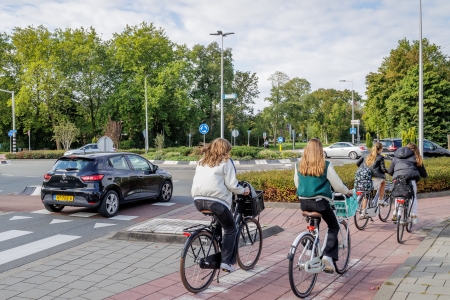It is unknown to what extent distraction is a factor in crashes among young road users. Information about distraction among (young) cyclists is only known from self-reported behaviour and self-reported crashes. Goldenbeld et al. [23] found that 12- to 17-year-old youngsters that said they listened to music or made calls while cycling had a 1.6 higher risk of crashing than cyclists that did not. What was remarkable is that these youngsters indicated to pay more attention to traffic when they were using a device. This self-reported compensation strategy was also found in another questionnaire study [24]. It found that a majority of young cyclists (16-18) adapted their behaviour during phone calls or while listening to music by cycling more slowly or looking around more. A field study among young cyclists (aged 16-18) by Stelling-Kończak et al. [25] showed that one fifth to one third of the particpants looked around more while listening to music. However, what was also apparent was that about half the participants looked around less often while listening to music. This was such a substantial percentage that the study was called off. Therefore – and on account of the limitations of self-reported behaviour – more evidence is needed to allow for conclusions about the crash risk of distraction in traffic for young road users, on the one hand, and about the compensation strategy they might apply to decrease crash risk. For more information, see SWOV fact sheet Distraction in traffic.
Answer
